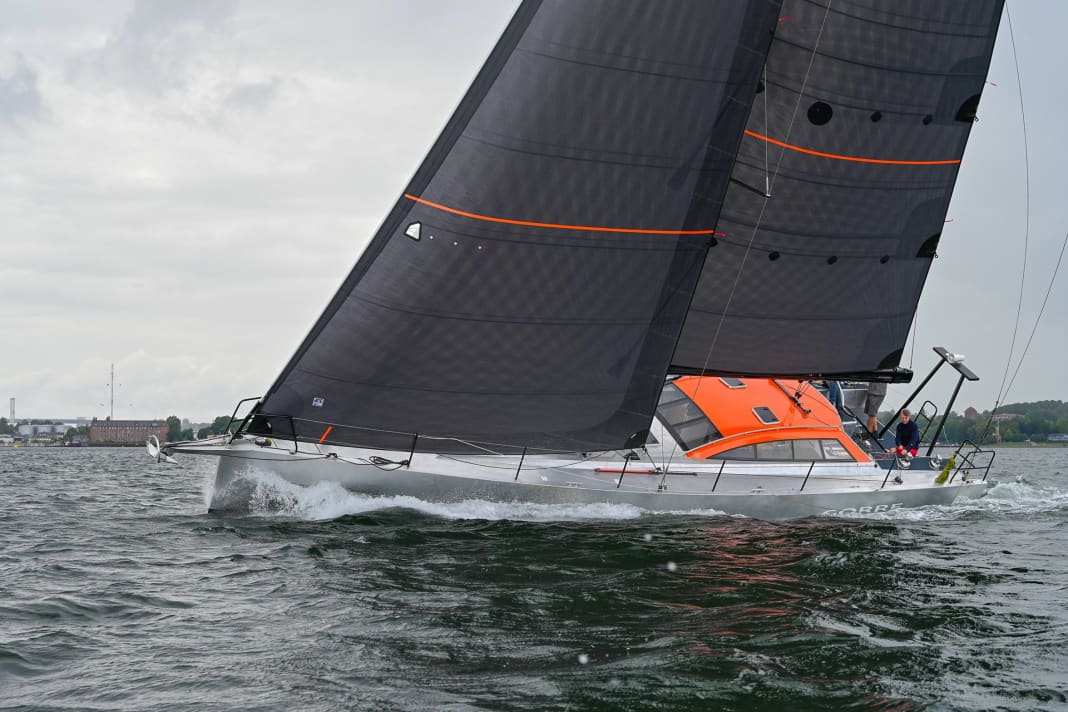Sustainability: Recycled material for sails from UK Sails and North Sails






Recycled material is now used in many textile products, often with slight changes to the product properties such as a higher weight or slightly lower strength. The X-Drive sails from UK Sails demonstrate that there is another way. These now use a 100 per cent recycled film base from Challenge sailcloth. The special thing about this is that the film not only has a smaller CO2 footprint, it also has a higher UV resistance than films made from new raw materials. This extends the service life of the X-Drive sails, which are already considered durable. The switch from classic Mylar to the recycled material is therefore doubly sustainable. This is all the more pleasing as the longer use of the sails also results in less waste.
North Sails introduces Renew, a recycled cloth
Noth Sails goes one step further. The cloth called Renew was presented for the first time at boot Düsseldorf. North Sails President Ken Read and Head of Product Tom Davis took the opportunity to personally present the new material together with Managing Director for Germany Stefan Matschuck. The raw materials of the Renew laminate consist of 90 per cent recycled or bio-based materials. Films and yarns made from recycled polyester, for example from plastic bottles, and bio-based Dyneema are used for the laminates. Bio-based Dyneema is already being used by cordage manufacturers such as Gleistein. North Sails' suppliers are certified (Bluesign and ISCC), which makes the sources of supply and manufacturing processes transparent, ensures environmental compatibility and documents the ecological footprint.
Renew is designed for mainsails and genoas on cruising yachts from 25 to 45 feet and is available in several cloth weights, fibre orientations and components. There are basically two versions to choose from: Standard and High Modulus. The standard version is made from recycled polyester and is designed for smaller boats. High Modulus is additionally equipped with bio-based Dyneema and is intended for larger yachts. The laminates from North Sails' own fabric factory in Sri Lanka are processed conventionally in a triradial cut. Visually, they look like standard Dacron and are white in colour.
Renew is just the beginning of the initiative
Sails made from Renew laminate should have a long mechanical life, as Tom Davies emphasises: "We are confident that a Renew sail offers the same unbeatable durability and profile fidelity that our customers are used to." The cloth has been extensively tested in the Group's own laboratories in the USA and Sri Lanka and has been intensively trialled in practice on seven yachts in different locations. Renew will be around five per cent more expensive than comparable materials. North Sails President Ken Read adds: "Renew is a cool product and it makes you feel better, it helps save the planet. We very consciously and fully checked the authenticity of sustainability claims and tested the materials before launching such an important new product. We wanted to be 100 per cent sure that North Sails can stand behind Renew's sustainability claim, including the reduction of the sailcloth's carbon footprint."
3Di should also become sustainable
The company is not only determined to continuously improve its products, but also to bring sustainable solutions to the industry on a larger scale. Renew should only be a first step in this process; it will not stop at panel laminates. North Sails is already working on integrating sustainable raw materials into various products on a larger scale. In addition, the company is researching new solutions for more sustainability in all areas, including for the 3Di membrane sail technology, according to Ken Read, who can look back on a wealth of experience as a sailor, including several participations in the America's Cup and the Ocean Race, and is considered one of the most successful ocean sailors in the world.
More sustainable sails on the market
With the Ekko series, Elvstrøm offers cruising laminates whose main components are made from recycled plastic. Both the load-bearing fibres, the foil and the taffeta fabric applied to the outside are made from PET bottles and are therefore produced sustainably. Instead of using up raw materials, the sails reduce the mountain of plastic waste that has been growing steadily for decades. Around 2,000 PET bottles find a new use for the sails of a 38-foot boat. Polyester loses almost ten per cent of its strength when it is recycled. However, this is compensated for by the higher fibre content of the Ekko sails.
Aramid and carbon fibres are generally used in high-performance sails, and often blends of the two. Once combined to form a laminate, the materials can no longer be separated. The 4T Forte membrane from Onesails is different. It consists of high-strength polyethylene filaments, similar to Dyneema. The funny thing is that the sail consists exclusively of polyethylene and does not require any glue or film, so it can be recycled separately. Unfortunately, new sails cannot yet be made from the recycled material, but fittings and other plastic parts can.

